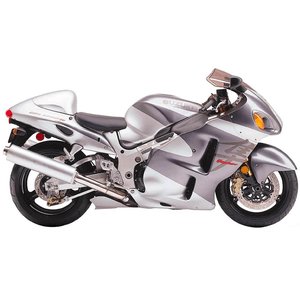Suzuki GSX 1300 R Hayabusa [1999–2007]: The Falcon’s Reign
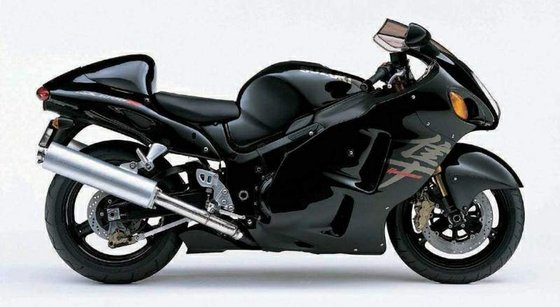
Introduction
When Suzuki unleashed the GSX 1300 R Hayabusa in 1999, it didn’t just break the mold—it vaporized it. Named after the peregrine falcon (a predator known for dive speeds over 300 km/h / 186 mph), the Hayabusa was engineered to dethrone Honda’s CBR1100XX Blackbird as the fastest production motorcycle on Earth. With a 1,298 cc inline-four engine, aerodynamic bodywork resembling a bullet train, and a top speed that rewrote the rulebook, the Hayabusa became an instant legend. This review dives into the 1999–2007 first-generation model, a machine that blurred the line between hyper-sport aggression and touring comfort—and still does today.
Design & Aerodynamics: Form Follows Velocity
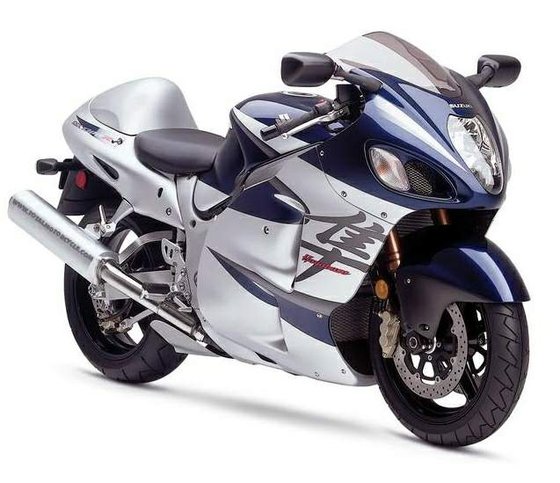
The Hayabusa’s design polarized opinions, but its functionality was undeniable. The teardrop-shaped fairing, stacked dual headlights, and elongated tail weren’t just stylistic choices—they were wind-tunnel innovations. With a drag coefficient of 0.265, it sliced through air like a katana. Test riders noted its stability at 299 km/h (186 mph), with one remarking, “At triple-digit speeds, the Busa feels planted, like it’s sucking the road to its tires.”
The twin-spar aluminum frame (steel in early models) hid its 217–249 kg (478–549 lbs) weight well, while the low-slung fuel tank and stepped seat allowed riders to tuck seamlessly. Love it or hate it, the Hayabusa’s design became iconic, with later iterations leaning into bold color schemes like Gunmetal Gray and Limited Edition pearl white.
Engine & Performance: The Art of Controlled Chaos
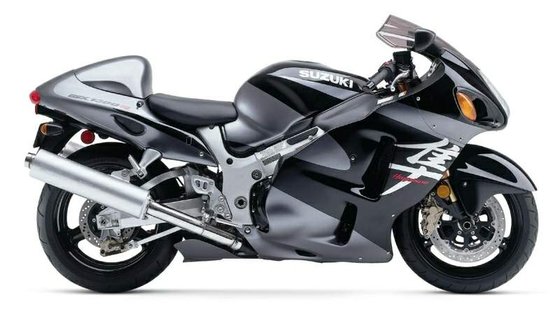
At its heart lay a 1,298 cc DOHC inline-four, producing 175 hp (127.6 kW) at 9,800 rpm and 138 Nm (102 lb-ft) of torque at 7,000 rpm. Fuel injection and Suzuki’s Ram Air Direct (SRAD) system ensured throttle response so crisp, one rider compared it to “switching on a lightsaber.”
Key Specs:
- 0–100 km/h (0–62 mph): 3.0 seconds
- 0–200 km/h (0–124 mph): 7.2 seconds
- Top Speed (1999 model): 306 km/h (190 mph) unrestricted | 299 km/h (186 mph) post-2000 with limiter
- Quarter Mile: 10.3 seconds @ 232 km/h (144 mph)
The 6-speed transmission was butter-smooth, though riders joked, “Why six gears when third gets you to jail speeds?” The 1999 model’s unfettered acceleration became folklore—testers described pinned-throttle runs as “bad... bad craziness”—but post-2000 models adopted a 299 km/h (186 mph) limiter due to a manufacturer “gentlemen’s agreement.”
Ride Comfort & Ergonomics: The Gentle Giant
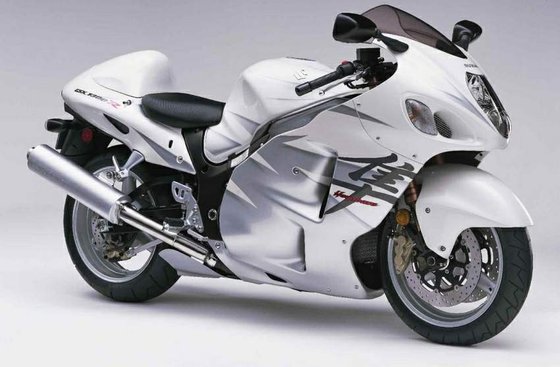
Surprisingly, the Hayabusa prioritized comfort. The seat height (805 mm / 31.7 in) and upright riding position catered to taller riders, with one 6’2” owner noting, “I could ride 500 miles and still walk afterward.” The fairing’s wind protection was exceptional—a rider caught in rain marveled, “My ankles stayed dry while my jacket soaked through!”
The 21-liter (5.5-gallon) tank offered a 280–370 km (174–230 mi) range, depending on throttle discipline. Instrumentation included a fuel gauge, dual tripmeters, and a real-time MPG/L per 100 km display—a novelty in the 2000s.
Handling & Braking: Taming the Beast
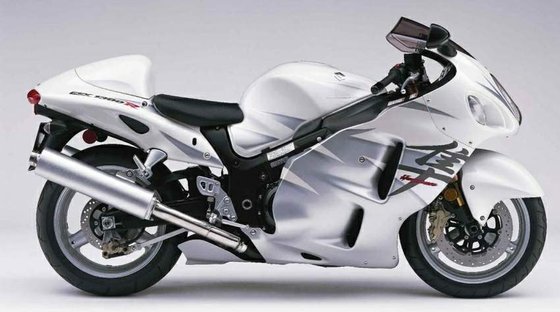
Despite its heft, the Hayabusa handled twisties with poise. Fully adjustable 43 mm inverted forks and a link-type rear suspension soaked up bumps, though tight switchbacks revealed its 1,480 mm (58.3 in) wheelbase limitations. “It’s no 600, but once leaned over, it carves like a battleship on rails,” said a reviewer.
Braking mixed superlatives with quirks. Dual 320 mm front discs with 6-piston calipers provided ample stopping power, but some testers desired more initial bite. One rider noted rear brake slides under hard stops, quipping, “It’s like the Busa winks at you mid-panic.”
Competition: The Speed Wars
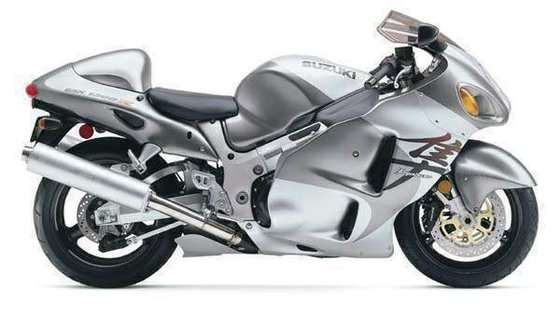
The Hayabusa’s rivals were few but fierce:
| Model | Power | Torque | Top Speed | Weight | Verdict |
|--------------------|-------------|-------------|-------------|-------------|------------------------------------------|
| Honda CBR1100XX | 153 hp | 119 Nm | 286 km/h | 223 kg | Refined but outgunned; the dethroned king|
| Kawasaki ZX-12R | 178 hp | 137 Nm | 303 km/h | 210 kg | Faster on paper, less composed at speed |
| Yamaha YZF-R1 | 150 hp | 108 Nm | 274 km/h | 177 kg | Lighter, sharper, but no match in a straight line |
The Hayabusa’s blend of brute force and touring comfort gave it an edge. While the ZX-12R challenged on specs, riders praised the Suzuki’s “effortless mile-eating ability” over Kawasaki’s rawer edge.
Maintenance: Keeping the Falcon Airborne
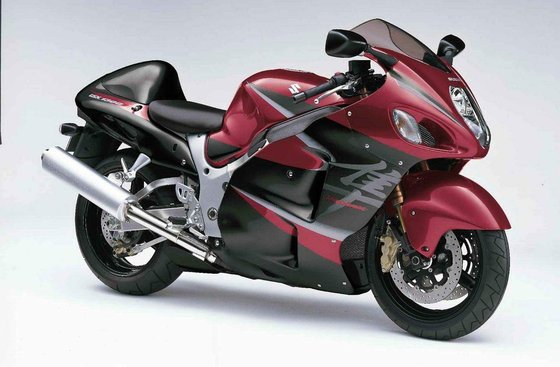
The Hayabusa is robust but demands attention:
- Oil Changes: 3.5L (3.7 qt) of 10W-40 every 6,000 km (3,700 mi).
- Valve Checks: Every 24,000 km (15,000 mi); intake clearance 0.10–0.20 mm, exhaust 0.20–0.30 mm.
- Chain: #530 chain with 112 links; keep tension tight to handle the torque.
- Tires: Stock 120/70-ZR17 front and 190/50-ZR17 rear. Expect 6,000–10,000 km from rears if you resist wheelies.
Common upgrades from MOTOPARTS.store:
- Brake Pads: Swap stock for sintered pads for sharper bite.
- Exhaust: Slip-on systems shed weight and amplify the Busa’s growl.
- Suspension Kits: Öhlins upgrades transform cornering precision.
Conclusion: The Legacy Lives On
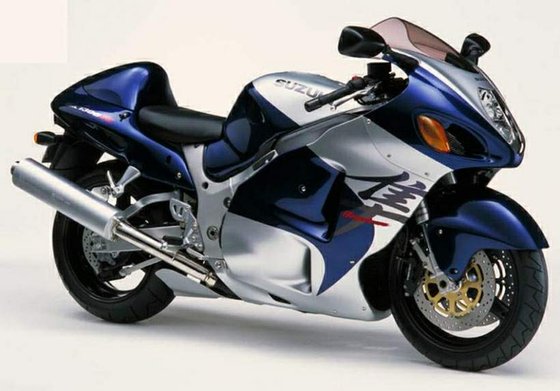
The first-gen Hayabusa wasn’t just a motorcycle—it was a statement. It redefined speed, challenged design norms, and proved that raw power could coexist with daily usability. Today, it remains a favorite for tuners, tourers, and thrill-seekers alike.
Whether you’re chasing horizons or dominating drag strips, the Hayabusa delivers. And when it’s time to sharpen its claws, MOTOPARTS.store has the upgrades to keep this falcon soaring.
“Bad craziness,” indeed.



Specifications sheet
| Engine | |
|---|---|
| Stroke: | Four-stroke |
| Max power: | 128 kW | 172.0 hp |
| Max torque: | 138 Nm |
| Fuel system: | Mikuni Denso Fuel Injection (46mm throttle bodies) |
| Lubrication: | Wet sump |
| Max power @: | 9800 rpm |
| Displacement: | 1299 ccm |
| Max torque @: | 7000 rpm |
| Configuration: | Inline |
| Cooling system: | Liquid cooled |
| Compression ratio: | 11.0:1 |
| Number of cylinders: | 4 |
| Dimensions | |
|---|---|
| Wheelbase: | 1480 mm (58.3 in) |
| Dry weight: | 221 |
| Wet weight: | 249 |
| Seat height: | 805 mm (31.7 in) |
| Overall width: | 740 mm (29.1 in) |
| Overall height: | 1155 mm (45.5 in) |
| Overall length: | 2140 mm (84.3 in) |
| Ground clearance: | 120 mm (4.7 in) |
| Fuel tank capacity: | 21 L (5.5 US gal) |
| Drivetrain | |
|---|---|
| Chain size: | #530 |
| Chain links: | 112 |
| Final drive: | chain |
| Transmission: | 6-speed, hydraulic wet clutch with back-torque limiter |
| Rear sprocket: | 40 |
| Front sprocket: | 17 |
| Maintenance | |
|---|---|
| Rear tire: | 190/50 z-17 |
| Engine oil: | 10W40 |
| Front tire: | 120/70 z-17 |
| Idle speed: | 1150 ± 100 rpm |
| Brake fluid: | DOT 4 |
| Spark plugs: | NGK CR9E or NGK CR9EIX |
| Spark plug gap: | 0.7 |
| Coolant capacity: | 3.0 |
| Forks oil capacity: | 0.96 |
| Engine oil capacity: | 3.5 |
| Engine oil change interval: | Every 5000 km or 2 years |
| Valve clearance (intake, cold): | 0.10–0.20 mm |
| Valve clearance check interval: | 24,000 km / 15,000 mi |
| Valve clearance (exhaust, cold): | 0.20–0.30 mm |
| Recommended tire pressure (rear): | 2.9 bar (42 psi) |
| Recommended tire pressure (front): | 2.9 bar (42 psi) |
| Additional Notes | |
|---|---|
| 0-100 km/h: | 3.0 seconds |
| Standing ¼ mile: | 10.3 seconds @ 232 km/h (144 mph) |
| Top speed (limited): | 299 km/h (186 mph) |
| Fuel consumption (average): | 5.9 L/100 km (39.8 US mpg) |
| Chassis and Suspension | |
|---|---|
| Rake: | 24.2° |
| Frame: | Twin-spar aluminum alloy |
| Trail: | 98 mm (3.8 in) |
| Rear brakes: | Single 240mm disc with 2-piston caliper (ABS on some models) |
| Front brakes: | Dual 320mm discs with 6-piston calipers (ABS on some models) |
| Rear suspension: | Link-type monoshock with remote reservoir, fully adjustable (preload, rebound, compression) |
| Front suspension: | 43mm inverted telescopic fork, fully adjustable (preload, rebound, compression) |
| Rear wheel travel: | 140 mm (5.5 in) |
| Front wheel travel: | 120 mm (4.7 in) |



